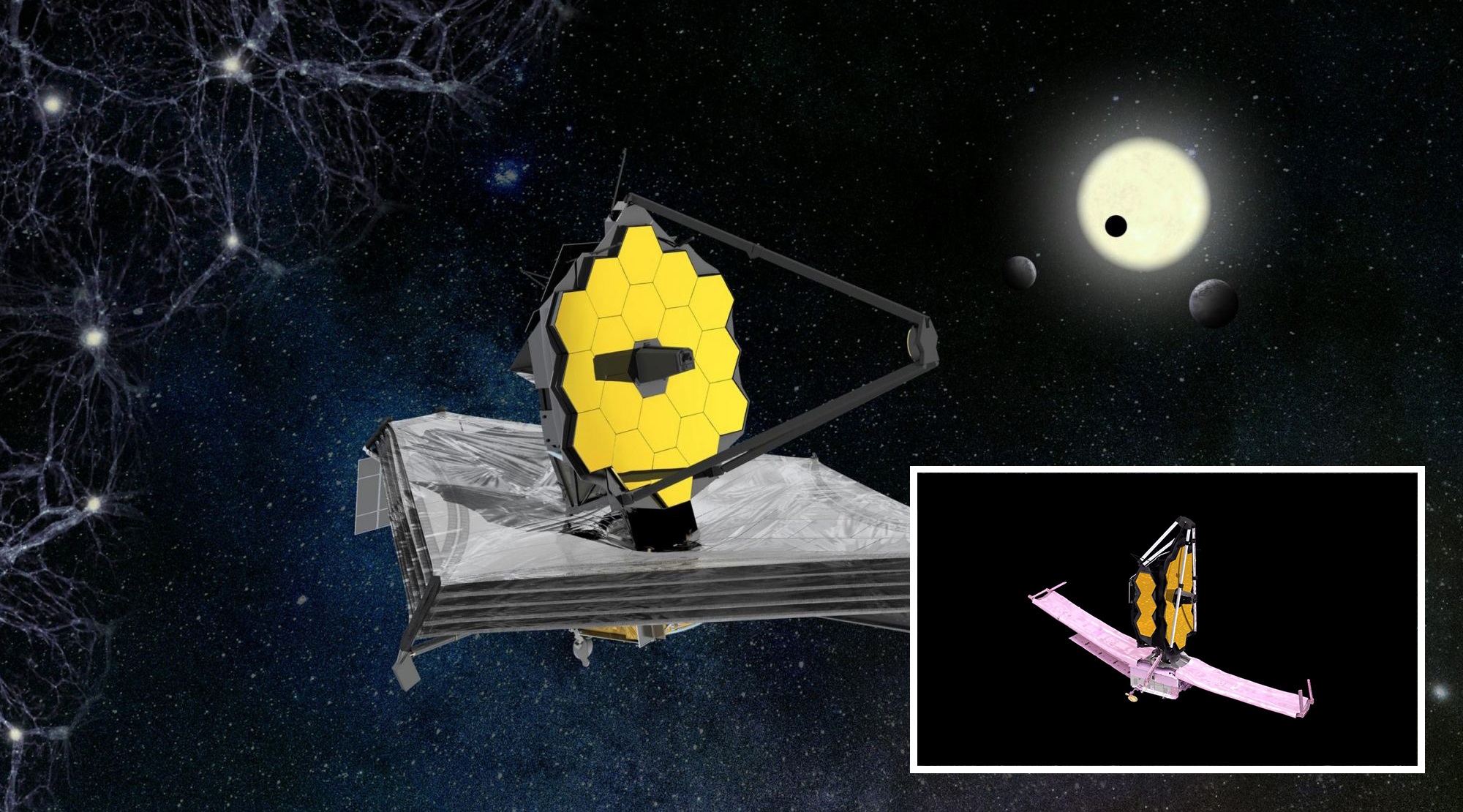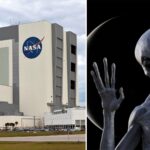Many people across the globe exhaled a sigh of relief as the JWST was successfully launched on Christmas Day. It is still a long way to go for the team in charge of installing the world’s biggest and most costly space observatory before they can say they have succeeded. Passing through each possible stumbling block is a triumph. Now that the JWST’s sunshield deployment has begun, it will take at least five days to complete the complicated and critical task.
JWST’s strength comes in part from its seven-fold larger mirror than the Hubble, but it is not what has caused so much controversy throughout the development and deployment of this observatory.
The JWST will fill a need in our understanding of the cosmos by observing in the infrared portion of the spectrum, which has always been the focus of the human investigation. To look into the infrared, one must protect oneself from the Sun’s heat, necessitating the use of enormous and cumbersome sun shields.
Following the Forward Sunshield, NASA announced that the Aft structure will be lowered on Tuesday. Cables support and release mechanisms are included in the shields’ five membranes. The orbit of the JWST avoids astronauts from tripping over wires that become tangled or striking malfunctioning equipment since it is 1.5 million kilometers (1 million miles) from Earth. It took four hours to deploy forward. The mission was in jeopardy if it had failed, so the relief is palpable.
Our telescope is blooming like a flower in space! This marks the start of a major phase to #UnfoldTheUniverse: our sunshield deployment. First, what is our sunshield?
5️⃣ layers
🎾 Opens to the size of a tennis court
🛡️ Protects Webb’s optics from the Sunhttps://t.co/tTGIWqFAz8 pic.twitter.com/jRgd8a4sT1— NASA Webb Telescope (@NASAWebb) December 28, 2021
However, the process does not finish once the sun shields are lowered. Deployable Tower Assembly was the next phase, which was now accomplished. Because of this, the telescope can work at a temperature of 40 K (-233oC or -388oF) without interference from the rest of the spaceship.
Still to come: releasing the sunshield cover, extending mid-boom, and adjusting sunshield-layer tension.
Because so many processes are required, NASA cautions that each stage takes a considerable amount of time. Even while it only took 20 minutes for the front pallet to be lowered and 18 minutes for the aft pallet to be lowered and deployed, the whole procedure for both took several hours due to the hundreds of extra processes necessary, according to the Webb blog of the organization.
As part of this process, the telescope is carefully monitored for structural temperatures, the Sun is positioned in such a way that it provides the ideal temperature, heaters are activated, release mechanisms are activated, and software is configured. Finally, the pallets are locked in place.”
Deploying the sunshield is the most difficult step, but it is not the last. As soon as the sunshields have created a cool and comfortable atmosphere, the mirrors themselves must be deployed, beginning with the secondary mirror and moving on to the main mirror’s component wings afterward. To go to L2, the Lagrange Point opposite the Sun from Earth, the telescope has to consume fuel after it is completely unfurled.
It was at this time that NASA received a positive development: If the JWST’s deployment is successful, it will be able to run longer than initially anticipated. Due to the smoothness of the launch and initial course adjustments, less propellant was consumed than originally expected.
This gives the telescope additional room for orbital corrections and orientation changes as it ages. There is enough propellant for the mission to last for at least ten times longer than the standard five-year period.
To put it another way, there is double the amount of research.
The Engineering Behind JWST
Randy Kimble will never forget the days after Hurricane Harvey’s devastation of Houston, Texas, in August of 2017. He could not stay at home because of his job as a scientist on the James Webb Space Telescope (JWST) assembly, test, and commissioning team. One of the 100-day space simulation test campaigns at NASA’s Johnson Space Center in Houston at the time was already 10 years behind schedule and much over budget.
Space.com’s Kimble reported that the front gate was under several feet of water, and the remainder of the facility had been shut down. “Johnson’s rear gate was open to the public, but there was still one path from a nearby hotel strip. We did not run out of liquid nitrogen for the cooling system in a couple of days. Things were heating up.”
As a former instrument developer for the Hubble Space Telescope’s precursor, Kimble has been working on the James Webb Space Telescope since 2009. But he stated the JWST tests in the 40-foot diameter Chamber A (constructed in the 1960s to test equipment for the Apollo lunar landings) were a career-high point for him. When the telescope is turned on, it will be operating at a temperature of minus 390 degrees Fahrenheit (minus 217 degrees Celsius).
There were “long and grueling” testing for Webb in cryo-vacuum, Kimble added. “After the test, it would take weeks merely to chill everything down and then warm it back up again securely. Your testing is done during this time period when you are at your coldest and most steady.”
For six years, Kimble said, teams worked around the clock, including on weekends and holidays, to perform various test campaigns. Four scientific instruments were tested on their own, as well as almost every other aspect of the telescope, which is one of the most complicated and costly space observatories ever created.
The James Webb Space Telescope, which has taken 30 years to develop and is expected to cost $10 billion when completed, can not afford to make a mistake. When it comes to space, things may go awry very quickly.
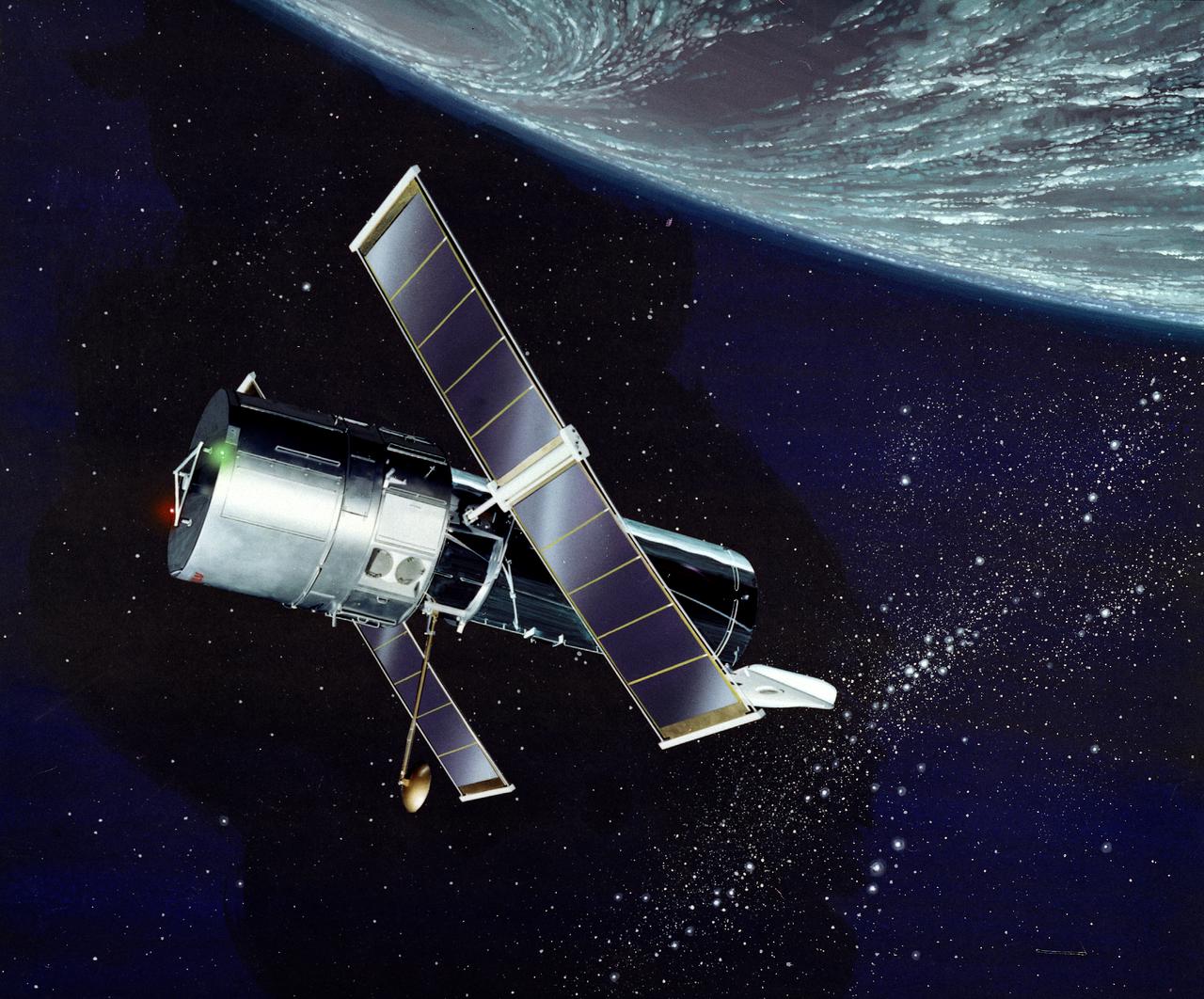
Lessons from Hubble
Almost immediately after it was unveiled in 1990, it became clear that something was wrong. Researchers were disappointed by the low-quality, smeared photos it returned to them. The large telescope mirror was found to be the source of the issue, having been poorly polished during the telescope’s manufacture. To remedy the situation, a rescue mission comprised of astronauts was launched. Once Hubble was fitted with “glasses” to remedy its myopia, it blossomed into the astronomical juggernaut that has produced tens of thousands of iconic and scientifically invaluable photographs.
As a result, there is no room for error while using the James Webb Space Telescope.
Because it is a prototype, the James Webb Space Telescope is subject to the same flaws that plague all prototypes, according to ESA senior adviser for science and exploration Mark McCaughrean, an interdisciplinary scientist on the JWST scientific working group. “That is why JWST is so pricey, you ask? For the last 20 years, we have spent a lot of time creating and testing every single element to ensure that it does not have any issues.”
What is the point of Webb’s complication? If the mission were simpler, would not it function just as well? And why can not astronauts take care of it?
Webb had no intention of making a product that could be used by the general public. Spacecraft that can be visited by humans cannot offer the research it is designed to convey, nor can it see the depths of space it is meant to explore (at least not with currently available spaceships).
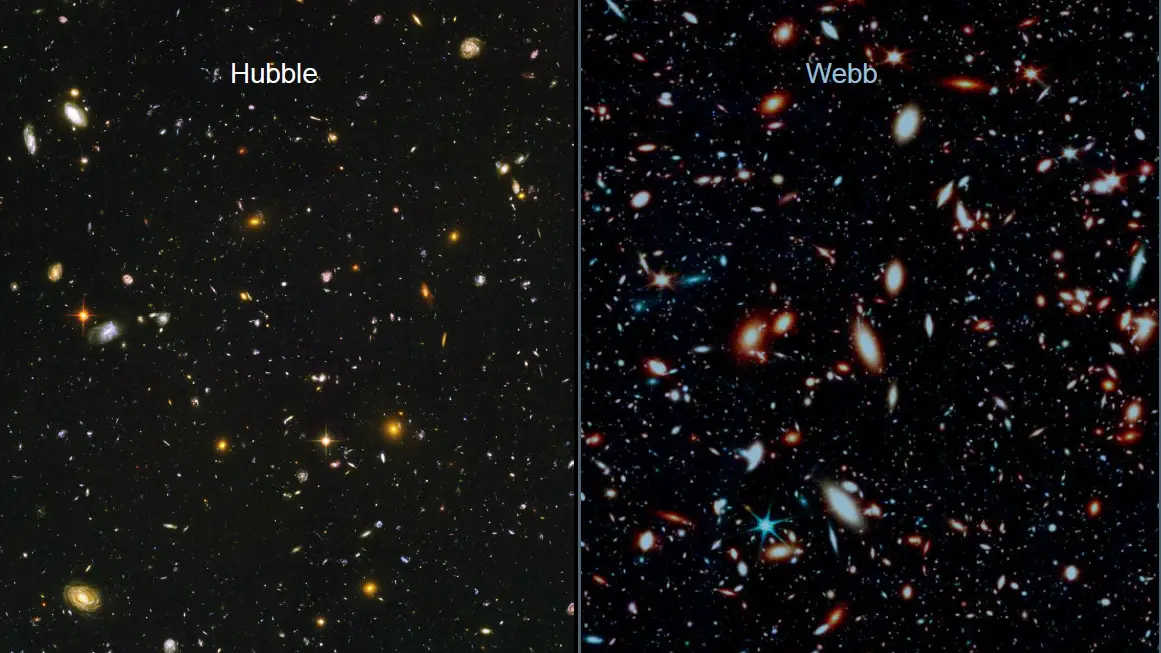
The first light machine
The James Webb Space Telescope (JWST) was developed to observe the first stars and galaxies that formed from dust and gas in our early cosmos, only a few million years after it was created.
Infrared and near-infrared wavelengths are now radiated by these distant galaxies and stars that were visible when the cosmos was just a few hundred million years old. Due to the Doppler shift caused by the expanding cosmos, a curious phenomenon is known as the “redshift” may be seen. An ambulance siren’s frequency may be distorted by a similar mechanism.
Special sensors, unlike those used to detect visible light, can detect infrared radiation, which is basically heat. The incoming signals from JWST’s investigation of distant galaxies and stars are likewise exceedingly feeble because of the distance. In order to make this hoped-for finding feasible, the scientists and engineers behind JWST had to overcome several technological hurdles.
Away from the Earth
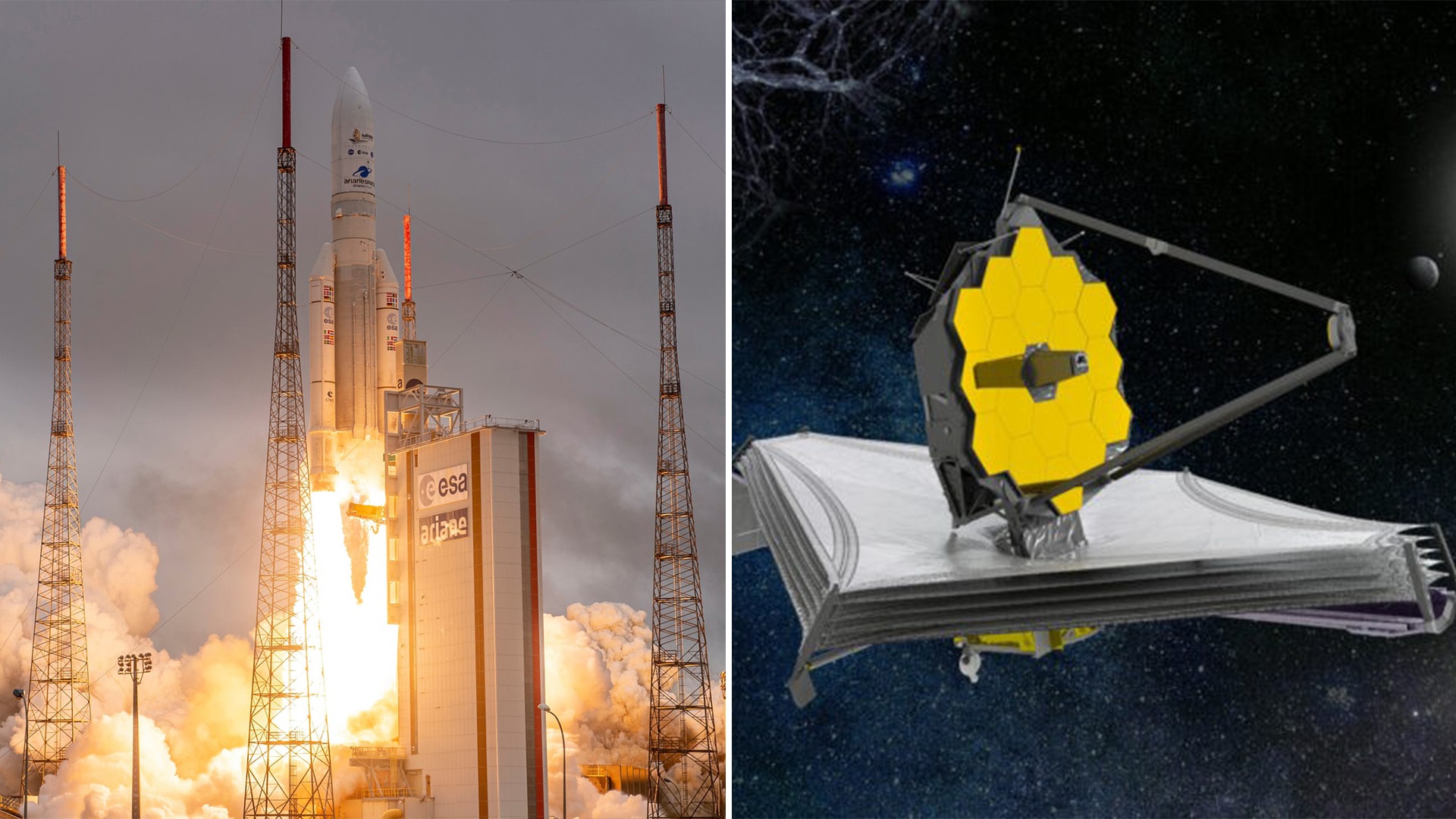
It was during the second servicing mission in 1997 that the Hubble Space Telescope was outfitted with then cutting-edge infrared detectors; these sensors were later upgraded when new technology became available. The Hubble Space Telescope was originally designed to only detect visible light from the universe (that in wavelengths that the human eye can process). Although infrared astronomy was a secondary consideration, Hubble was certainly not designed to detect the warmth of our universe’s furthest reaches.
In orbit, Hubble flies at a height of 340 miles above the Earth (545 kilometers). Hubble is subjected to both the sun’s rays and the heat from the planet it orbits. As a consequence, the telescope’s infrared detectors are blinded by its own heat, and it is unable to view the faint galaxies in the distance.
You need a chilly telescope to get the most out of an infrared telescope, McCaughrean added. Becoming far enough away from Earth is also necessary for getting exceedingly chilly.
One million miles (1.5 million kilometers) distant from the Earth, the James Webb Space Telescope will be. That is four times as distant as the moon away. To get a better view of Earth’s axis of rotation, the telescope will follow a path that takes it around the sun and around the so-called Lagrange point 2 (L2). Earth and the sun maintain the spaceship centered at L2 thanks to their gravitational forces on the probe.
Even so, Webb would not be sufficiently chilled to fulfill its job in this manner.
The James Webb Space Telescope’s five-layer solar shield was tested for deployment and tension by NASA.
The spacecraft’s tennis court-sized deployable sunshield is comprised of five layers of an aluminum-coated space blanket material known as Kapton. Without this, the mission would be impossible.
One of the most nerve-wracking phases of the spacecraft’s post-launch deployment routine is when the sunshield unfolds in space before the telescope reaches its target.
According to McCaughrean, “the sunshield is by far the most mission-critical item.” “In order for the telescope to operate, it must be completely deployed. On the earth, it has been folded and unfolded many times. But in space, where gravity is absent, it is never been done before.”
The primary cooling system for the James Webb Space Telescope is its sunshield. The four never-before-flown instruments and the mirrors will be kept at a temperature of 390 degrees Fahrenheit behind it (minus 217 degrees Celsius). On the other hand, the sun-facing side will reach temperatures of up to 230 degrees F. (128 degrees C).
Sunshield scientist Kimble compared it to sunscreen with an SPF of at least a million in terms of how much solar radiation it attenuates. Kimble was aboard JWST during Hurricane Harvey. In this way, the telescope may be passively cooled to such a low temperature that observations are not constrained by its own light.
The sunshield is more than just a parasol; it is the result of meticulous engineering. Kapton’s five layers are properly spaced such that each layer absorbs and radiates heat away from the spaceship in equal measure. The material, despite its thinness and small weight, is extraordinarily strong and can withstand being bombarded by meteorites.
The James Webb Space Telescope’s main mirror.
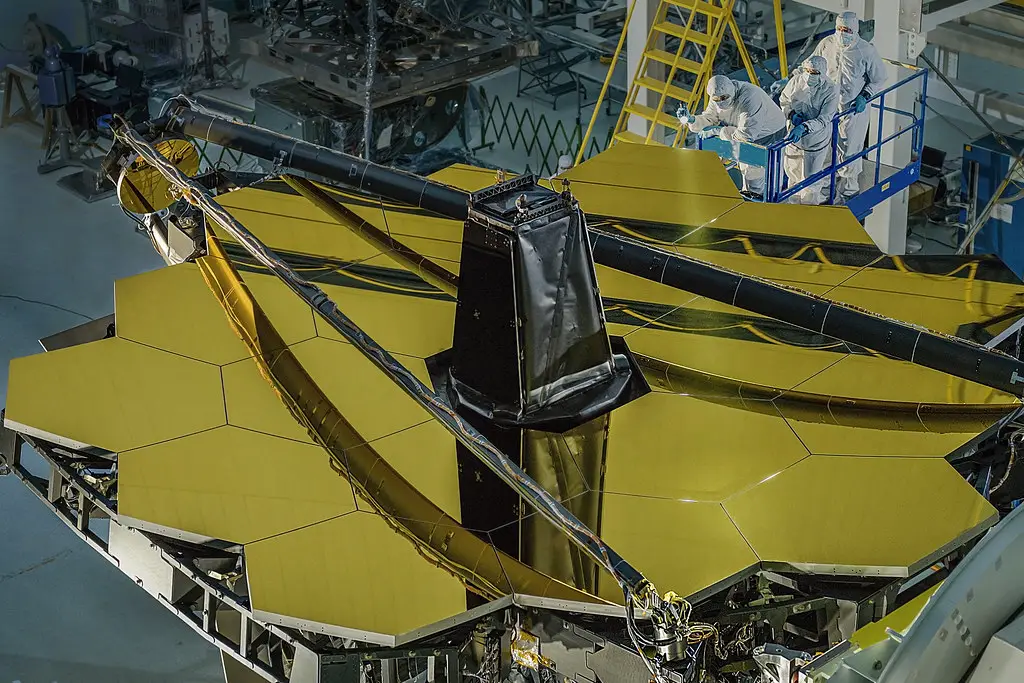
For the James Webb Space Telescope to perform what it was planned to do, it could not be too tiny. Even if Hubble were as cold as Webb, its 7.8-foot (2.4-meter) mirror would not have been able to identify the early galaxies.
“More light must be collected if we are to glimpse those distant, dim galaxies,” Kimble added. Because Webb’s mirror can capture six to seven times more photons in a given length of time, that offers you a huge edge over Hubble.
Mirror size is directly proportional to telescope light-gathering capacity, as McCaughrean pointed out. Webb’s 21-foot (6.5 m) mirror will let it capture photographs of the cosmos that are both clearer and deeper than those taken by Hubble, and at a fraction of the time.
During Hubble’s deep fieldwork, they might spend a few weeks looking at a single field, Kimble said. That type of sensitivity limit may be reached in seven or eight hours, according to Webb.”
Too big for space?
However, there is still another obstacle ahead. How do you get a tennis court-sized mirror and a 21-foot lift into orbit?
Space Shuttle Discovery’s 60-foot (18.3 m) and 15-foot wide (4.6 m) payload bay, from which the Hubble Space Telescope was launched in 1990, accommodated the telescope snugly, measuring 44 feet long and at most 14 feet broad.
Webb’s mirror is more than three feet (1 meter) too big to accommodate Europe’s Ariane 5 rocket fairing, which was the widest available when Webb was developed. As a result, in order for Webb to reach space, he will have to fold and unfold. In order for the telescope to launch, the telescope’s mirror and sunshield, as well as the customary arrays of solar panels and antennas, must be neatly stored.
Golden lightweight origami
An origami-like folding mechanism enables the mirror to be launched, which has 18 hexagonal pieces, each measuring 4.3 feet (1.32 meters). Once in orbit, these components expand and come together to form a solid unit. As soon as you get the mirror exactly aligned with your jigsaw puzzle, the seams between each piece are absolutely smooth.
The NIRCam instrument, one of the spacecraft’s cameras, will be used to help precisely align the mirror once it is in orbit.
When the mirror segments are all aligned, Kimble predicts that they will form a smooth, continuous mirror shape. “We will start with 18 independent NIRCam photos and finish up with a single gorgeous image,” says the team.
NIRCam, like many other parts of the telescope, is simply not permitted to fail, according to McCaughrean.
In the event that NIRCam fails, “you will not be able to line up the telescope,” McCaughrean warned them. “That is why it is so dense with redundant information. In the event of one of the cameras malfunctioning, the other is still there.”
Small motors mounted on the backs of the 18 hexagonal mirror segments move and bend the plates with incredible accuracy, resulting in one enormous, flawlessly smooth mirror.
In addition, it was necessary that the mirror be as light as possible. The 21-foot mirror of the Webb Space Telescope would be too heavy for any current rocket if developers merely scaled up the Hubble Space Telescope’s 8-foot glass lens.
Since Webb’s mirror has a much smaller surface area, it will be much more lightweight. It weighs only 46 pounds each of the 18 beryllium hexagonal parts (20 kilograms). Only 6.5 metric tonnes of the spacecraft are needed to get it into orbit compared to Hubble’s 11.1 metric tonnes.
The golden color of the mirror is due to the gold plating on its surface. Infrared radiation is best reflected by a golden tint, rather than white or silver, according to McCaughrean.
In turn, the secondary 30-inch (74-centimeter) mirror, mounted on a folding tripod that must be launched into space, focuses the light reflected by the massive mirror. The light then travels to the detectors through a tertiary mirror after entering the telescope via an aperture in the big mirror.
There are on average 344 single points of failure, Menzel noted during the news conference. Eighty percent of those are linked to the deployment.’
Webb will arrive reaching L2 about one month after launch if all of its deployments go according to plan. Kimble tested this process in Houston during Hurricane Harvey, while the telescope was gently cooling down to its working temperature while equipment and mirrors were inspected and aligned.
After we calm down the system a little, we can conduct a little harsher alignment,” says Kimble. 100 to 120 days into the mission, “the structures will still be shifting somewhat due to cooling and shrinkage,” thus any final adjusting will have to wait until we have reached temperature stability.
For Kimble, the next several months will be the pinnacle of his professional career, and he intends to “go out with a bang.” Scientists who have worked on cutting-edge space telescopes for more than 40 years say they are ready to pass over the first light machine to the next generation once its nerve-wracking commissioning stage is over.

